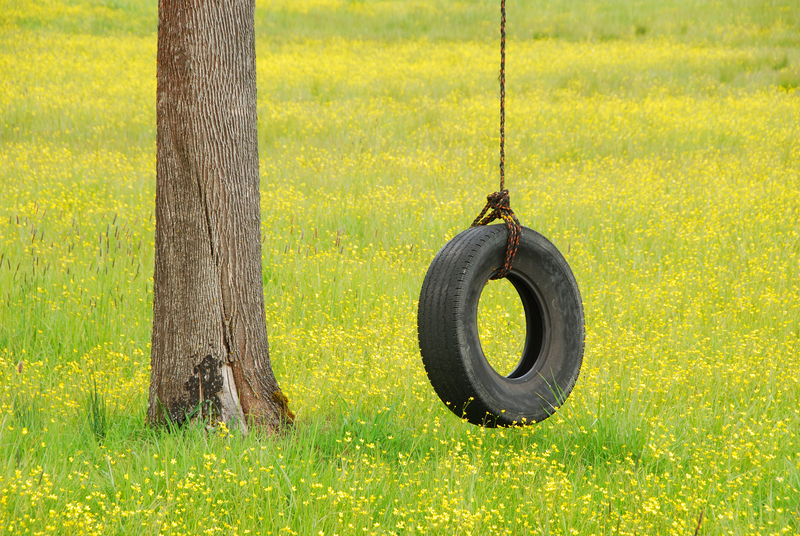Community Action Steps for Proper PPE Waste Disposal
In recent years, personal protective equipment (PPE) such as masks, gloves, face shields, and gowns have become essential in maintaining public health. However, the widespread use of PPE has led to a pressing new challenge: proper disposal of PPE waste. If not managed appropriately, PPE waste can threaten our environment, harm wildlife, and even contribute to the spread of pathogens, including viruses. Therefore, _community-driven strategies_ for correct PPE waste management are vital.

Why Is Proper PPE Waste Disposal Important?
When PPE is discarded carelessly, it can:
- Enter our waterways and endanger marine life
- Block drainage systems, causing floods
- Break down into microplastics, polluting soil and water
- Pose infection risks to waste workers and the general public
These reasons underscore the importance of proper PPE waste disposal in communities. Adopting responsible practices ensures safety, sustainability, and environmental protection.
Understanding the Types of PPE Waste
Before communities can act, it's crucial to identify what constitutes PPE waste. Common types include:
- Masks: Surgical masks, N95 respirators, cloth masks
- Gloves: Disposable latex, nitrile, or vinyl gloves
- Face shields and goggles: Often made from plastic materials
- Protective gowns and coveralls: Used primarily in healthcare settings
- Sanitizing wipes and tissues: Frequently used alongside PPE
Key Concepts for Community Education
Educating the community about the distinct categories of PPE waste helps in its effective segregation and disposal. Communities should distinguish between contaminated PPE waste (potentially infectious) and non-contaminated PPE waste (worn in non-medical or low-risk settings).
Community Action Steps for Effective PPE Waste Management
Implementing change at the community level requires a mix of education, infrastructure, policy, and partnership. Here's a comprehensive step-by-step action plan:
1. Community Awareness Campaigns
The first action step is to foster awareness around PPE waste disposal. Effective education initiatives can include:
- Public service announcements via local radio, social media, and newspapers
- Information posters in public spaces (markets, bus stops, clinics)
- Workshops and webinars on the importance of proper PPE disposal
- Distribution of leaflets and guides explaining PPE waste segregation
It's essential that the messaging is clear, consistent, and accessible to all community members--even those with limited literacy or language barriers.
2. Dedicated PPE Waste Bins
Without the correct bins, it's challenging for citizens to dispose of PPE responsibly. Communities should:
- Install color-coded PPE waste bins at high-traffic locations--supermarkets, parks, offices, and healthcare centers
- Label bins clearly with images and multi-language instructions
- Promote the use of sealed containers or double-bagging for home PPE waste
Such infrastructure facilitates collection and prevents cross-contamination with regular waste streams.
3. Safe Collection and Transportation Systems
Local authorities must ensure the safe and frequent collection of PPE waste by trained personnel. Action steps include:
- Implement a regular schedule for emptying PPE bins
- Train waste collectors in handling and storing infectious waste
- Equip workers with their own PPE gear for protection
- Ensure sealed transportation to minimize spillage and exposure
4. Clear Guidelines for Residents
Communities can distribute step-by-step instructions for disposing of masks, gloves, and other PPE at home. Guidelines may cover:
- Mask removal: Remove masks using the ear loops, avoid touching the front, and place directly in designated bin or bag
- Double-bagging: Instruct residents to place used PPE in a plastic bag, seal it, and put it into a dedicated PPE bin
- Disinfection: Recommend spraying with disinfectant before disposal, especially if collected at home
- Never litter: Remind residents to never discard PPE in the street or nature
5. Collaboration with Local Organizations
Engaging stakeholders such as schools, businesses, community centers, and NGOs strengthens PPE waste management efforts. Joint measures can include:
- Group clean-up drives targeting areas with littered PPE
- Distribution of free or low-cost PPE waste containers to homes
- Recycling campaigns (where feasible) for certain types of PPE
- Informative events led by healthcare professionals
6. Responsible Waste Processing
Once collected, where does the PPE waste go? Communities must:
- Coordinate with municipal authorities for safe PPE waste processing
- Advocate for incineration or advanced landfill methods to prevent leaching into the environment
- Explore emerging technologies, such as non-polluting waste-to-energy solutions
Proper processing prevents the potential hazard of infectious PPE re-entering the environment or endangering landfill workers.
Promoting Long-term Behavioral Change
Short-term action is vital, but sustainable solutions for responsible PPE waste disposal in the community require a shift in habits. To encourage lasting change:
- Include waste management in school curricula and youth programs
- Offer incentives for households or groups that consistently follow best practices
- Enforce fines or penalties for improper PPE littering, with publicized case studies of consequences
- Share positive stories about community members leading clean-up initiatives
Innovative Solutions in PPE Waste Management
Many communities are exploring _innovative approaches_ for sustainable PPE disposal:
- Biodegradable PPE: Advocating for the use of compostable face masks and gloves
- Mechanical recycling: Research is underway into converting certain PPE components into new plastic products or fuels
- PPE upcycling: Art projects that turn old masks and shields into public installations to raise awareness
- Mobile collection vans: Vehicles dedicated to collecting PPE waste from homes and businesses
Case Study: Community PPE Waste Program Success
In Metropolis City, the local council partnered with neighborhood leaders to launch a pilot PPE waste initiative. Efforts included distributing free labeled PPE bins, holding weekly educational workshops, and rewarding schools that had zero litter violations. Over six months, the community reduced PPE littering by 85%, proving that targeted action steps for PPE waste disposal can yield powerful results.
Overcoming Common Challenges
Even motivated communities face obstacles in PPE waste management. These may include:
- Lack of funds for specialized PPE bins and regular collection
- Public complacency or misinformation about PPE risks
- Insufficient training for waste collectors
- Absence of centralized processing facilities
Addressing these challenges requires strong leadership, consistent advocacy, and flexible problem-solving. Engaging local businesses to sponsor bins, applying for environmental grants, or leveraging volunteer groups can help bridge resource gaps.

Frequently Asked Questions about Proper PPE Waste Disposal
- Can PPE like masks and gloves be recycled?
While most single-use PPE is not currently recyclable through conventional facilities due to contamination risk, some specialized programs may recycle non-contaminated PPE. Communities should first focus on safe disposal rather than recycling. - Is burning PPE at home a safe disposal method?
No. Home burning of PPE releases toxic substances harmful to health and the environment. Always rely on municipal disposal systems and avoid open burning. - What should businesses do with their PPE waste?
Establish on-site dedicated PPE collection bins, train staff in correct disposal procedures, and coordinate with local waste management services for proper collection and handling. - Do cloth masks require special disposal?
Reusable cloth masks should be sanitized and reused until worn out. When discarding, wash before disposal and use general household waste bins, not PPE-specific bins for contaminated items.
Conclusion: A Cleaner Tomorrow through Joint Action
The responsibility for proper PPE waste disposal lies with every individual, but collective action amplifies results. By raising awareness, providing infrastructure, educating each other, and supporting local initiatives, communities can minimize the pollution and health hazards associated with discarded PPE. Everyone, from policy makers to families, plays a part in protecting public health and the environment.
Together, with informed and consistent action, we can transform PPE waste from a challenge into an opportunity for community-driven sustainability. Let's commit today to proper PPE waste disposal for a cleaner, safer, and greener tomorrow.